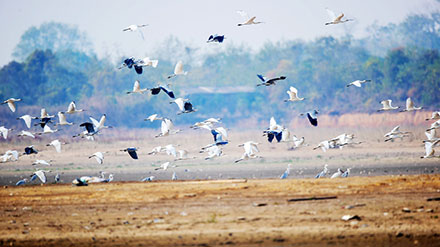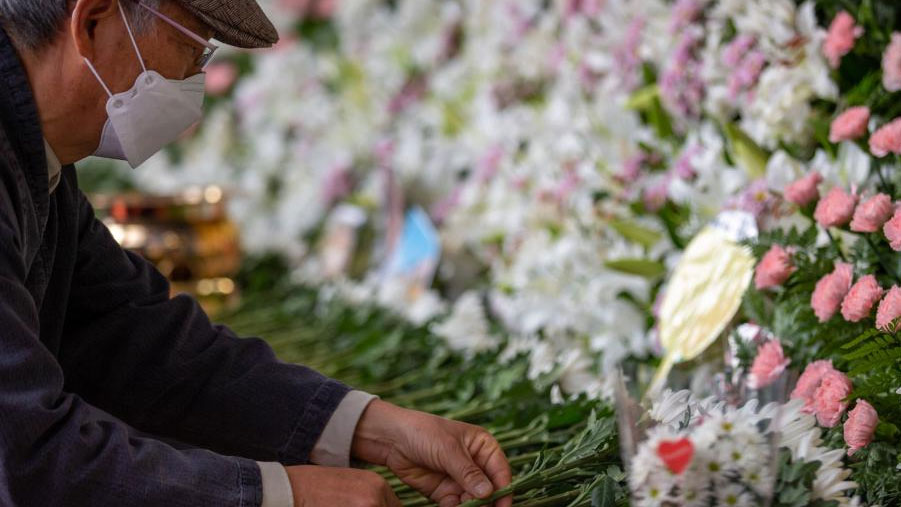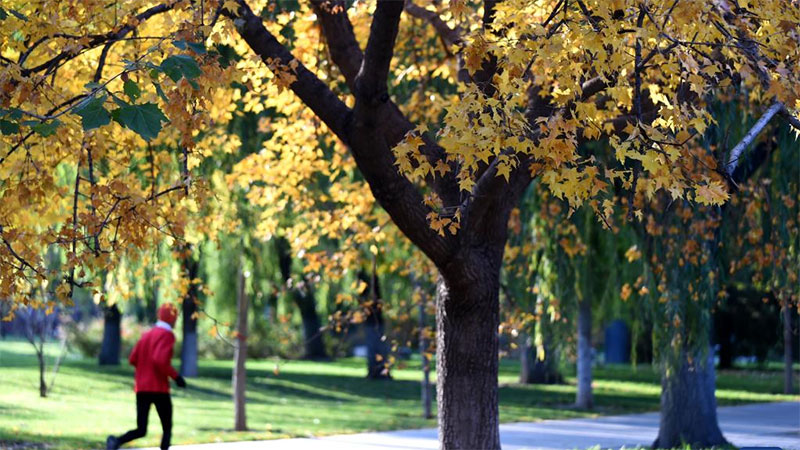How small technologies from China work wonder in Tanzanian fields
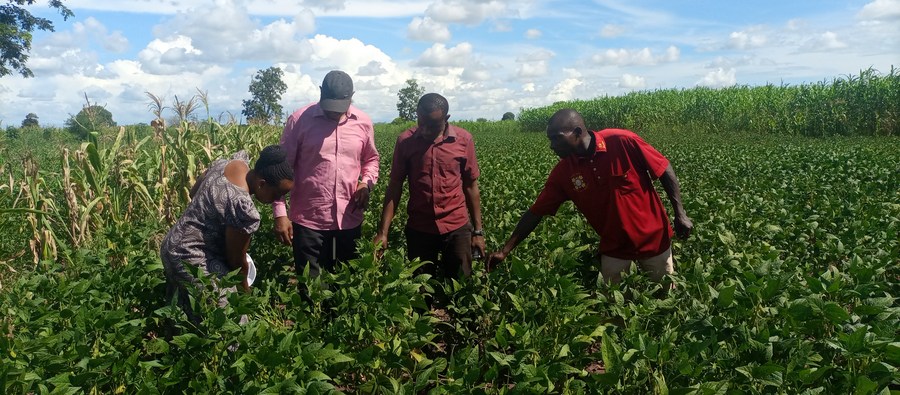
Members of the maize and soybean inter-planting project "Small Bean and Big Nutrition" work in a field in Morogoro, Tanzania, on April 21, 2022. (China Agricultural University/Handout via Xinhua)
"This is an area where this cooperation between Africa and China can really be very useful ... Especially at a time when the world is facing disruptions in terms of food distribution through supply chains," said Monique Nsanzabaganwa, deputy chairperson of the African Union Commission.
DAR ES SALAAM, Nov. 3 (Xinhua) -- Fikiri Kisairo, a farmer from Kitete village of the Morogoro region, west of Tanzania's economic capital Dar es Salaam, walks with pride as he looks after his thriving corn crop.
"The days of spending sleepless nights thinking about how to pay school fees for my two children are over," said Kisairo, a beneficiary of the decade-long China-Tanzania agricultural cooperation.
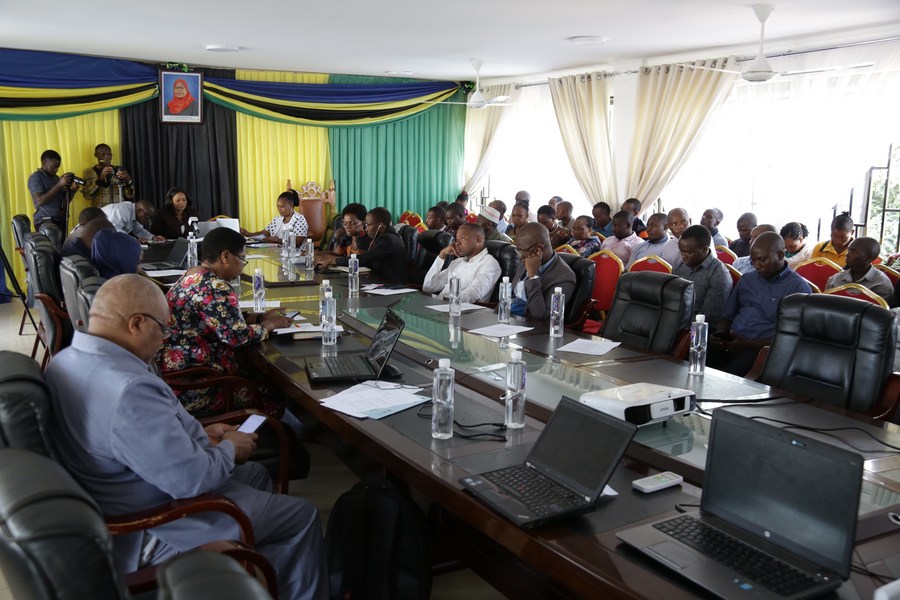
People attend a forum on Achievements of China-Tanzania Agricultural Cooperation: Small Technology, Big Harvest project, in Morogoro region, Tanzania, on Nov. 16, 2021. (Photo by Nurdin Pallangyo/Xinhua)
SMALL TECHNOLOGY, BIG HARVEST
Kisairo joined a maize project in 2019 overseen by China Agricultural University (CAU) in collaboration with Tanzania's Sokoine University of Agriculture in a few villages in the Morogoro region. This project, called "Small Technology, Big Harvest," aims to reduce poverty in this rural region of Tanzania.
Today, with a family of five, Kisairo has managed to not only pay his children's school fees, but also build a deep-water cellar to irrigate his about 1.21-hectare vegetable garden throughout the year, including the dry season.
Martine Shigela, regional commissioner of Morogoro, said that with the help of local authorities in collaboration with the CAU, farmers have boosted their maize yield significantly, and 1,667 demonstration farmers have grown at least one acre (about 0.4 hectares) of maize each.
Denis Nkala, regional coordinator for Asia and the Pacific of the UN Office of South-South Cooperation, said the project is a concrete example of China-Africa cooperation for resilience and food security, achieved through a demand-driven, multi-stakeholder approach.
"Through the sharing of good farming practices, the project aims to triple maize production and increase farmers' incomes, thus contributing to poverty reduction, food security and the achievement of the Sustainable Development Goals in Tanzania," Nkala said.
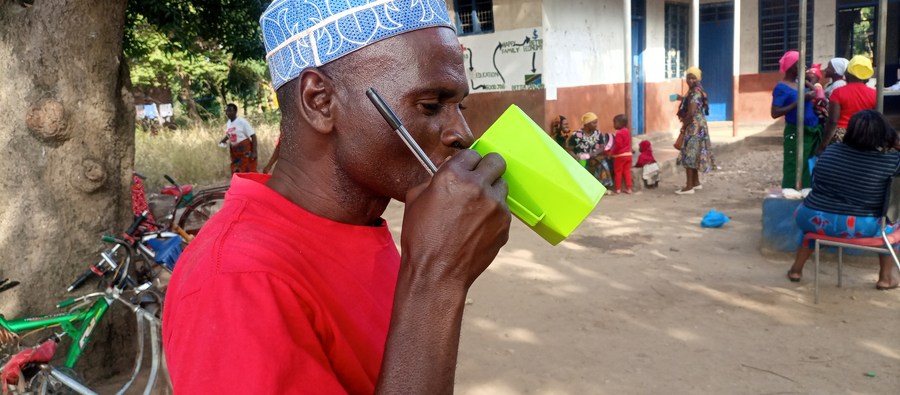
A local villager drinks soybean milk in Morogoro, Tanzania, on June 23, 2022. (China Agricultural University/Handout via Xinhua)
SMALL BEAN, GREAT NUTRITION
Soy milk, a traditional Chinese drink rich in flavors and nutrients, is gaining popularity among local villagers. "I love it and I hope my friends will like it too. It's good for our health," said Tatu Seif, a 62-year-old farmer from Kitete village.
Soybeans were first introduced to the Morogoro region through another China-Tanzania cooperation project, dubbed "Small Bean, Great Nutrition."
According to Morogoro's 1991-2018 Nutrition Report, local farmers long suffered from malnutrition due to limited protein, vitamins and minerals with their outdated farming techniques.
To effectively improve their nutritional structure by promoting inter-cropping soybeans, Chinese agronomist Li Xiaoyun and his team at the CAU decided to work with the local authorities to promote the project in four villages, and provided on-site and remote instructions on planting and management techniques.
"Soy milk is enjoyable, especially for children under five, pregnant and lactating women to improve their health, and the project should reach as many people as possible," said Rozalia Grayson Rwegasira, deputy administrative secretary in charge of the economic and productive sector at the Morogoro regional police station.
Through this project, farmers "will get a substitute for cow's milk, which is expensive and rarely available," said Leah John Mwingira, another agricultural extension worker.
FINE EXAMPLE OF CHINA-AFRICA COOPERATION
Poverty reduction and agricultural development are among the nine China-Africa cooperation programs announced last year at the 8th Ministerial Conference of the Forum on China-Africa Cooperation (FOCAC). The Morogoro region, one of Tanzania's agricultural bases, is a miniature of such collaboration.
China and Tanzania are good partners in the agricultural sector, said Xu Chen, minister counsellor of the Chinese Embassy in Tanzania. Through experience sharing and investments, bilateral agricultural cooperation projects have not only increased crop yields, but also improved the living conditions of many local farmers. Meanwhile, an increasing number of Tanzanian agricultural products are entering the Chinese market, Xu said.
China-Africa agricultural cooperation can help realize Africa's aspiration for self-sufficiency by harnessing its own natural resources, said Monique Nsanzabaganwa, deputy chairperson of the African Union Commission.
"This is an area where this cooperation between Africa and China can really be very useful ... Especially at a time when the world is facing disruptions in terms of food distribution through supply chains," she said.
Photos
Related Stories
- Chinese premier meets with Tanzanian president
- Xi holds talks with Tanzanian president
- China Cultural Center in Tanzania hosts art exhibition to cement cultural ties
- Feature: Tanzanian woman witnesses growing Tanzania-China cultural ties
- Profile: Tanzanian President Samia Suluhu Hassan
- Tanzanian president's visit to China will boost bilateral ties: FM spokesperson
Copyright © 2022 People's Daily Online. All Rights Reserved.






